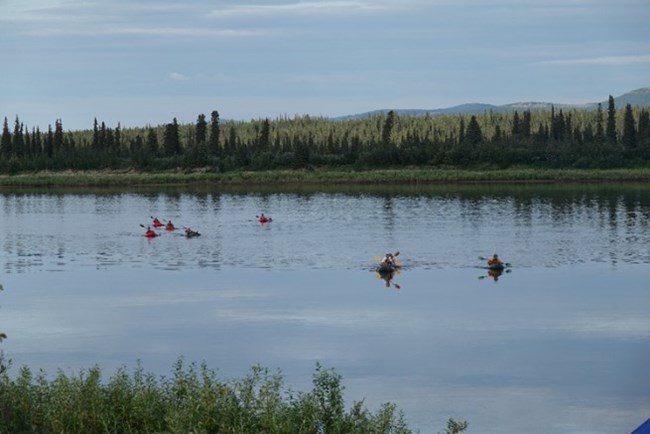|
Located in the heart of Northwest Alaska, the landscape of the Kobuk Valley National Park is constantly in flux. Rivers flow in meandering curves, carving deep channels into glacial and alluvial deposits. Sand dunes reshape their silhouettes as wind undulates across their ridges. In this landscape, cycles of change span the scale of minutes to millennia – salmon return to their spawning grounds after years at sea; tendrils of black spruce roots reach down into the crystalline sand, stabilizing ancient dunes; and in the arctic summer, the sun skims the horizon but never sets, until ice and snow freeze the land in an icy grip of winter darkness each year. As a display of these cycles, Kobuk Valley is a sanctuary for wilderness values and wildlife; a place for life in the arctic to play out as it has for millennia.

NPS Photo Of the approximately 1,750,380 million acres comprising Kobuk Valley National Park, approximately 190,000 acres were designated as wilderness by the Alaska National Interest Lands Conservation Act. This area is in the southeastern portion of the park and includes the Great and Little Kobuk Sand Dunes. The remaining 1,494,500 acres are determined suitable for wilderness and are managed as eligible wilderness. Kobuk Valley is part of a 17-million-acre contiguous expanse of arctic and subarctic wildlands preserved as wilderness, bordered by the Noatak and Gates of the Arctic Wildernesses to the north and the Selawik Wilderness to the south. Still, the future of Kobuk Valley is uncertain. Imminent threats from climate change, developing technologies, changing use patterns, and potential regional developments make preserving the wilderness character of Kobuk Valley challenging. Effective stewardship requires coordination between land managers and local users, and a land ethic of respect and humility by all.
All of Alaska’s NPS wilderness was designated in 1980 by the Alaska National Interest Lands Conservation Act, which created a more human-centric lens for wilderness stewardship than that which is found outside the state. However, the NPS’s primary mandate is the same across all federal lands: to preserve wilderness character. The holistic concept of wilderness character protects the biophysical environment, personal experiences, and symbolic meanings that collectively distinguish wilderness from general backcountry and frontcountry areas. Unique social, cultural, and ecological benefits of wilderness are rooted in wilderness character preservation. 
NPS Photo Homeland as WildernessThe Kuuvaŋmiut Iñupiat descendents of the Kuuŋmiut, Akuniġmiut, and Kuuvaum Kaŋjaġmiut Nations have lived here for over ten thousands of years and are an indelible part of this landscape. Kobuk Valley is a rich homeland with the biannual migration of caribou, profusion of salmon and whitefish in the rivers, and an abundance of plant life growing on the river terraces. The Iñupiat Ilitqusiat – that which makes us who we are – defines values of humility, respect for nature, and cooperation; values which live on in this landscape as the law of the land. Here, wilderness helps bridge the values and land ethics of Indigenous peoples and rural residents and those of people from around the world. Subsistence is a way of life, a source of sustenance, and central to culture, community, and spirituality in the Northwest Arctic. Indigenous knowledge and values guide subsistence hunting practices. Learn more about how subsistence is practiced today, as well as in the past. Visiting Kobuk’s WildernessMuch of Kobuk Valley National Park is undeveloped. Unlike most national parks, there are no roads, facilities, trails, or campgrounds. But it does offer outstanding opportunities to experience a genuine wilderness on its own terms. Please visit our list of licensed operators for trip facilitation, such as air taxi and guided river trips. |
Last updated: April 10, 2024
